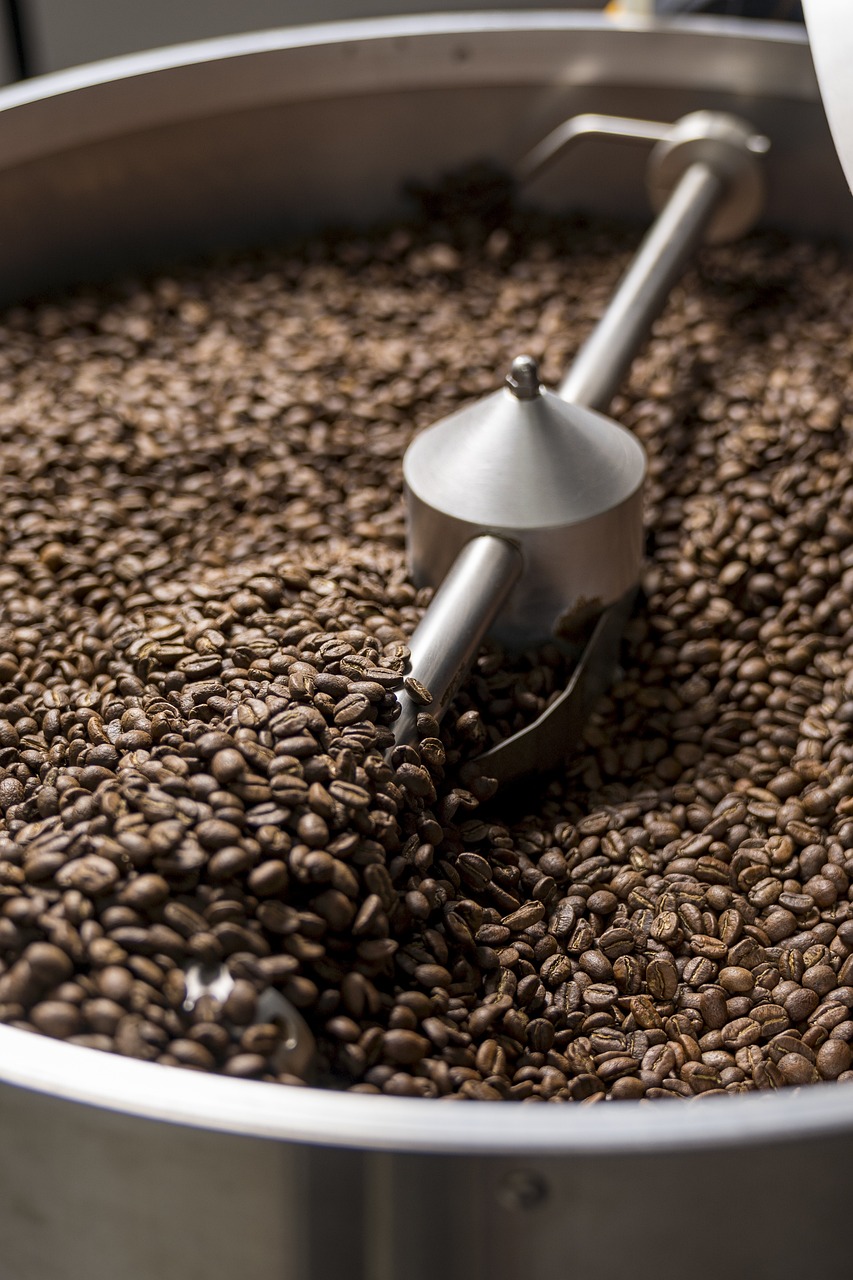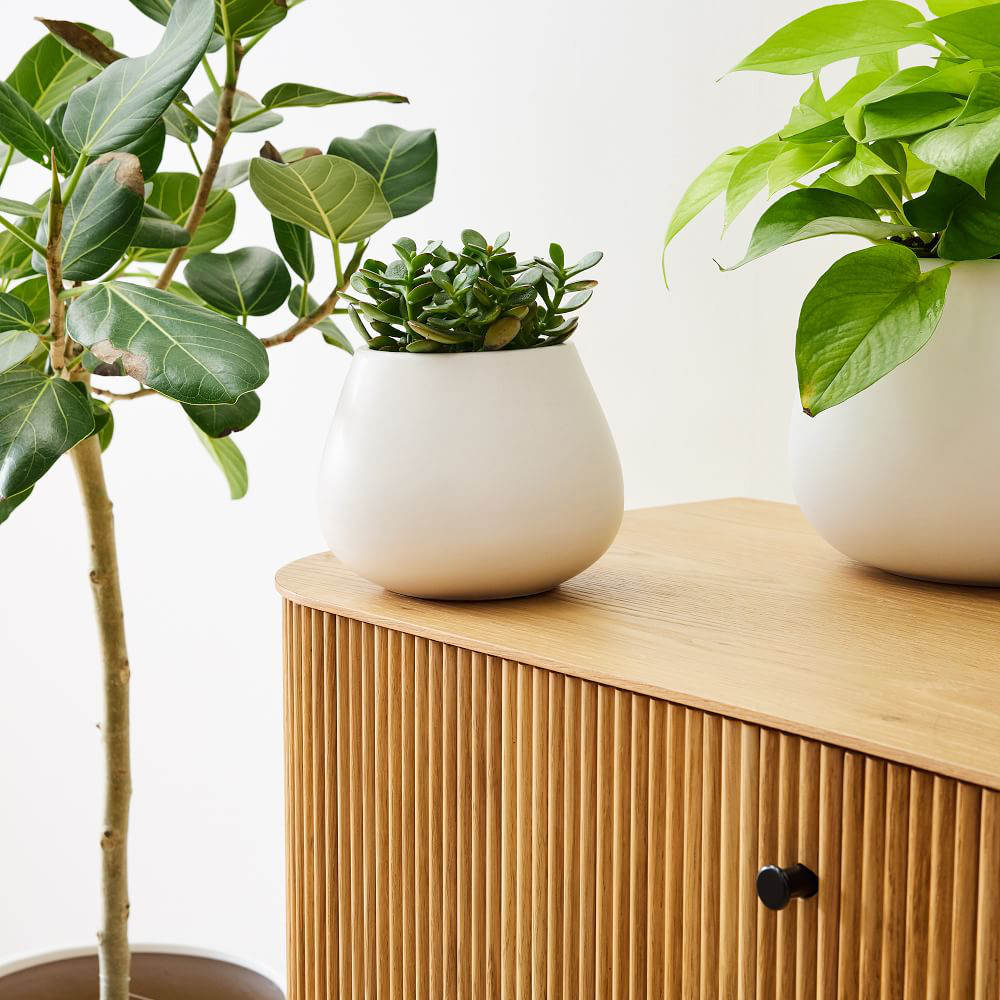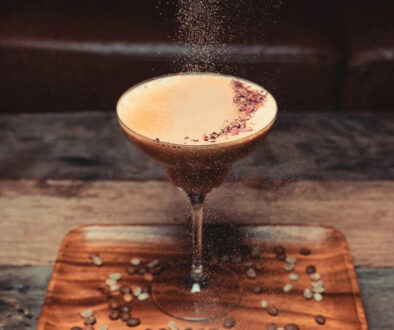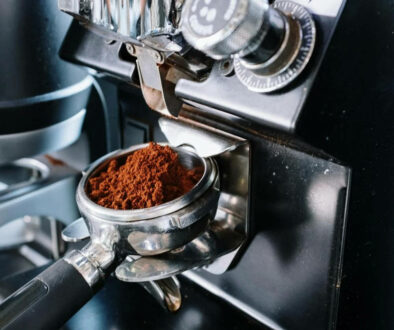How Coffee Roasts Affect Flavour: Light, Medium, and Dark Roast Differences
When it comes to coffee, the journey from bean to cup involves many steps, but one of the most critical stages is roasting. Coffee roasting transforms green beans into the aromatic, flavourful coffee we know and love. But did you know that the level to which a coffee bean is roasted can drastically change how it tastes in your cup?
From light and fruity to rich and bold, roast levels play a key role in defining the overall flavour profile of your coffee. Understanding the differences between light, medium, and dark roasts can help you choose the perfect coffee to match your taste preferences. Whether you enjoy the bright acidity of a light roast or the deep, intense flavours of a dark roast, there’s a roast level for everyone. In this article, we’ll explore the characteristics of each roast type and explain how roasting affects the flavour of your coffee.

What is Coffee Roasting?
Coffee roasting is the process of heating green coffee beans to transform them into the familiar brown beans used for brewing. It’s during this process that the complex chemical reactions—known as the Maillard reaction and caramelization—occur, unlocking the distinct aromas, flavours, and colors of the coffee we drink. Essentially, roasting brings out the flavours hidden within the raw coffee bean, which are shaped by the bean’s origin, growing conditions, and processing method.
Roasting is both an art and a science, requiring careful control of temperature and timing. As the beans heat up, they change in color, from pale green to yellow, then brown, and eventually reach a stage where oils emerge on their surface in darker roasts. Different roast levels are achieved by adjusting the duration and intensity of heat exposure, which determines the coffee’s flavour, acidity, body, and aftertaste.
Lightly roasted beans retain much of their original, nuanced flavours from the bean’s origin, while darker roasts develop deeper, bolder notes from the roasting process itself. In essence, roasting is the craft of balancing the natural flavours of the coffee bean with the characteristics brought out by heat.
1. Light Roast
a. Characteristics
Light roast coffee beans are a light brown color, often dry on the surface because they haven’t roasted long enough for the oils inside to rise to the exterior. These beans are roasted at lower temperatures and for a shorter duration, typically between 356°F and 401°F (approx. 180°C to 205°C), just before the “first crack” occurs—a point where the beans begin to expand and release moisture.
Light roast beans retain much of their original qualities, making them the best expression of a coffee’s unique origin, including factors like the region, altitude, and soil where the beans were grown. They are known for their vibrant acidity and bright, often delicate flavours, with less emphasis on body and richness.
b. Flavour Profile
Light roast coffees are celebrated for their complexity and brightness. The lighter roast preserves the bean’s inherent flavours, resulting in a cup that may feature fruity, floral, citrusy, or even tea-like qualities. These coffees tend to have a crisp, clean finish and a more pronounced acidity compared to darker roasts.
Common flavour notes include lemon, berries, jasmine, and other subtle sweetnesses that give the coffee a lively and refreshing character. Light roasts typically highlight the origin of the beans more than the roasting process itself, allowing you to truly taste the terroir of the coffee.
c. Who It’s Best For?
Light roast coffee is ideal for those who enjoy a bright, vibrant cup with more acidity and delicate flavours. Coffee drinkers who appreciate complexity and a wider range of flavours will find light roasts particularly appealing. If you’re looking for a cup that offers crisp, refreshing notes and a more nuanced experience, a light roast is the way to go. This roast level is also favored by those who prefer to drink their coffee black, as it allows the unique characteristics of the bean to shine through without the need for additives.
LIGHT ROAST FACTSHEET
Characteristics: Light roast beans are a dry, light brown, retaining their original flavours due to lower roasting temperatures (356°F-401°F). This roast preserves the bean’s unique origin profile, often highlighting the terroir.
Flavour Profile: Known for brightness and complexity, light roasts offer fruity, floral, and citrus notes with high acidity and a crisp finish, showcasing the bean’s inherent qualities.
Best For: Ideal for those who prefer a vibrant, nuanced coffee, often enjoyed black to let the bean’s natural flavours shine.

3. Medium Roast
a. Characteristics
Medium roast beans are a balanced brown color, slightly darker than light roast, with minimal oil visible on the surface. These beans are roasted to an internal temperature of around 410°F to 428°F (approx. 210°C to 220°C), just past the first crack but well before the second. This intermediate roasting time and temperature allow for a harmonious balance between the beans’ original flavours and the notes introduced by the roasting process.
The medium roast offers a well-rounded flavour profile, achieving a pleasing balance between acidity, body, and sweetness. With a fuller body than light roasts and milder acidity, medium roast coffee is often considered the “Goldilocks” of roasts—not too light, not too dark.
b. Flavour Profile
Medium roasts are known for their richer, more developed flavours. Common tasting notes include caramel, nuts, chocolate, and hints of fruit. This roast brings out sweetness and warmth, creating a smooth and approachable cup with a rounded mouthfeel. The acidity is more muted compared to light roasts, providing a smooth, slightly sweet, and balanced experience.
Popular examples of medium roast coffees often come from Central and South America, where beans develop flavours like hazelnut, cocoa, and gentle fruity notes. This makes medium roast coffee appealing to a wide audience, as it offers depth and richness without the bitterness associated with darker roasts.
c. Who It’s Best For?
Medium roast coffee is perfect for those who enjoy a balanced cup that isn’t overly acidic or bitter. It’s ideal for coffee drinkers who want some of the bean’s natural flavours to shine through, complemented by the smooth, sweet, and caramelized notes developed during roasting. This roast level is versatile, working well for both black coffee drinkers and those who enjoy adding milk or sugar for a creamier texture. If you appreciate a classic coffee flavour that’s rich yet smooth, medium roast is likely to be your ideal choice.
MEDIUM ROAST FACTSHEET
Characteristics: Medium roasts are brown with minimal surface oil, roasted at 410°F-428°F. This level offers a balanced flavour profile with moderate acidity, fuller body, and some sweetness from caramelization.
Flavour Profile: Richer notes of caramel, nuts, and chocolate define medium roasts, giving them a smooth, approachable taste with a rounded finish.
Best For: Great for those seeking a balanced, versatile cup, ideal for black coffee drinkers and those who enjoy adding milk or sugar.

5. Dark Roast
a. Characteristics
Dark roast coffee beans are a rich, deep brown color, often appearing oily due to the longer roasting time and higher temperatures, which range from about 464°F to 482°F (approx. 240°C to 250°C). These beans are roasted past the second crack, a stage where the cell structure of the bean breaks down, releasing natural oils to the surface and giving the beans their shiny appearance. This extended roasting process results in a heavier body and lower acidity, creating a bold, intense cup of coffee.
Due to the longer roasting time, dark roast beans lose much of their original flavour profile from the coffee’s origin, focusing instead on flavours imparted by the roasting itself. This results in a more uniform taste, with a robust, smoky profile that often appeals to those who enjoy a strong, full-bodied coffee experience.
b. Flavour Profile
Dark roast coffee is known for its bold, rich flavours and low acidity. Common flavour notes include dark chocolate, toasted nuts, smoky undertones, and hints of caramelized sweetness. The roasting process brings out bittersweet and earthy flavours, sometimes with subtle hints of spice, making dark roast coffee a popular choice for those who enjoy a hearty, intense brew.
The longer roasting time also enhances the coffee’s body, giving it a fuller mouthfeel and lingering finish. However, this comes at the cost of the bean’s natural flavours, as the roast profile itself dominates. Many people appreciate the consistent, deep flavours of a dark roast, particularly when paired with milk or cream.
c. Who It’s Best For?
Dark roast coffee is ideal for those who prefer a rich, robust cup with strong, bold flavours. It’s a go-to choice for fans of espresso, where the intense roast profile can stand up to milk and sugar while delivering a powerful taste. This roast level is perfect for those who enjoy a smoother, less acidic coffee and appreciate the warmth of dark, toasted notes. Whether you enjoy black coffee or coffee with milk, a dark roast offers a reliable, full-bodied flavour that holds up well in any preparation method, particularly for espresso-based drinks.
DARK ROAST FACTSHEET
Characteristics: Dark roast beans are deep brown with visible oils, roasted at 464°F-482°F. They lose much of the original bean flavour, gaining intense, smoky, and robust characteristics.
Flavour Profile: Dark roasts offer bold flavours with notes of dark chocolate, toasted nuts, and smoky undertones. Low in acidity, they have a fuller body and rich mouthfeel.
Best For: Perfect for fans of bold, intense coffee that holds up well to milk and sugar, especially for espresso-based drinks.

How Roast Levels Impact Brewing
Each roast level interacts uniquely with different brewing methods, affecting the taste, texture, and aroma of your coffee. Understanding how roast levels perform with various brewing styles can help you unlock the best flavours in every cup.
a. Light Roasts
Light roasts are often best suited to slower brewing methods that allow their delicate flavours to shine through. Pour-over, Chemex, and Aeropress methods are excellent choices, as they bring out the bright acidity and nuanced flavours that are hallmarks of light roasts. However, because light roasts have a denser structure, they often benefit from a finer grind size and longer extraction time, ensuring that the coffee grounds release all the subtle notes that might otherwise be missed.
b. Medium Roasts
Medium roasts are highly versatile and adaptable, making them well-suited for a variety of brewing methods. They work well with pour-over, drip coffee makers, and even French press methods. The balanced acidity and body of a medium roast are brought out effectively with standard brewing ratios and times, producing a cup that’s smooth, flavourful, and rich. Medium roasts also fare well in espresso machines, where they develop a balanced shot with sweet, caramelized notes and a smooth finish.
c. Dark Roasts
Dark roasts shine in methods that complement their intense, full-bodied flavours. Espresso machines, Moka pots, and French presses are ideal choices for brewing dark roasts. The high pressure and short extraction time in espresso brewing bring out the roast’s bold flavours and low acidity, while the immersion style of a French press highlights the coffee’s thicker body and deeper, bittersweet flavours. Since dark roasts are less dense due to the extended roasting, they often require a coarser grind and shorter brew time to avoid over-extraction and bitterness.
d. Adjusting Brew Variables Based on Roast
Each roast level benefits from tailored brewing adjustments:
- Grind Size: Light roasts generally need a finer grind, while dark roasts can use a coarser grind.
- Water Temperature: Light roasts benefit from slightly higher water temperatures (around 200°F), while dark roasts do well with slightly cooler water to avoid bitterness.
- Brewing Time: Light roasts can benefit from a slightly longer brew time for full extraction, while dark roasts typically require a shorter time to maintain smoothness.
By choosing the right brew method and adjusting variables based on roast level, you can fully appreciate the flavours each roast type has to offer. Whether you enjoy the complexity of a light roast, the balanced sweetness of a medium roast, or the bold strength of a dark roast, selecting the ideal brewing approach can make all the difference.
Choosing the Right Roast for You
Selecting the right coffee roast ultimately comes down to your personal taste preferences and the type of experience you’re seeking in a cup of coffee. Here are a few key considerations to help you decide:
- Flavour Preference: If you enjoy bright, fruity, or floral notes with a crisp, clean finish, light roasts will likely be your best match. For those who prefer a smooth, balanced flavour with hints of caramel or chocolate, medium roasts provide a perfect middle ground. If you’re drawn to intense, bold flavours with a smoky or earthy richness, dark roasts will be more your style.
- Acidity and Body: Light roasts generally have higher acidity and a lighter body, making them ideal for people who appreciate vibrant, refreshing flavours. Medium roasts offer a balance of acidity and body, while dark roasts have low acidity and a fuller body, appealing to those who prefer a robust, intense cup with minimal sharpness.
- Brewing Method: The way you like to brew your coffee can influence your choice. Light roasts excel in pour-over and drip methods, while medium roasts are versatile for all brewing styles. Dark roasts work especially well in espresso machines, French presses, and Moka pots, where their strong flavours come through best.
- Milk and Sweetener: If you enjoy adding milk or sweeteners, darker roasts tend to hold up better against these additions, offering a rich, satisfying flavour that pairs well with creaminess. Light and medium roasts are generally best enjoyed black or with minimal additions to highlight their complex, natural flavours.
Ultimately, don’t be afraid to experiment with different roasts to discover what suits you best. Many coffee enthusiasts find enjoyment in exploring the spectrum of roast profiles, finding new favorites as they try different beans and brewing methods.

Final Thoughts
Coffee roasting is an art that transforms raw beans into a range of flavours, from bright and fruity to bold and smoky. Each roast level offers a unique experience, catering to different tastes and preferences. Understanding the differences between light, medium, and dark roasts allows you to make more informed choices and enjoy your coffee in a way that perfectly matches your preferences.
Whether you’re drawn to the intricate notes of a light roast, the balanced sweetness of a medium roast, or the intense richness of a dark roast, exploring the spectrum of coffee roasts can enhance your appreciation of each cup. So grab a few bags from different roast levels, experiment with various brewing methods, and find your ideal roast to savor each morning. After all, the beauty of coffee lies in its endless variety and the joy of discovering your perfect brew.














